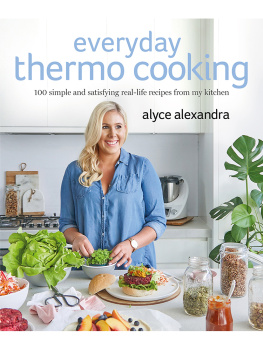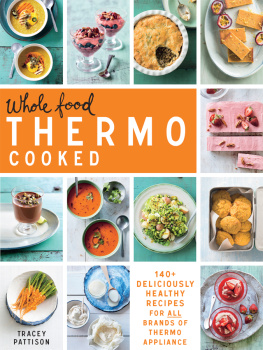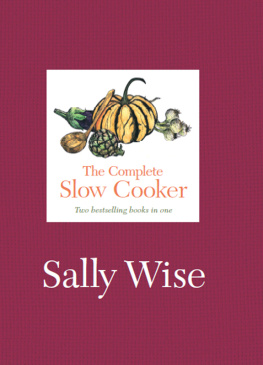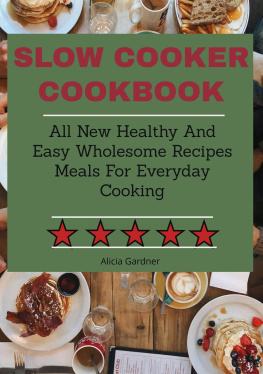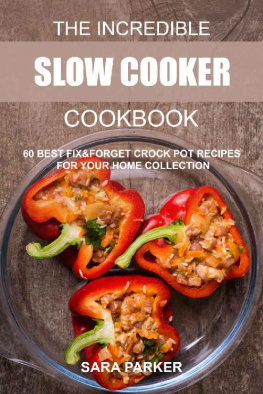Contents
mexican hollandaise

MAKES 1 CUP
It was hollandaise sauce that first had me fall in love with the thermo cooker. I still cant believe that a sauce so renowned for its difficulty can be whipped up in six minutes, absolutely no skill required! I love this Mexican-inspired variation which is punchier than the classic, adding a whole new dimension to Sunday-morning eggs. Invest in a great-quality smoked paprika it will make all the difference.
120g butter, roughly chopped
2 eggs (see note)
2 egg yolks
lime, juice only
50g white balsamic vinegar
teaspoon fine salt
teaspoon smoked paprika, or to taste
1 Insert butterfly into TC bowl. Add all ingredients, cook for 6 minutes, 70C, speed 4. Allow to stand in TC bowl for 5 minutes before serving.
Serve with toast, grilled asparagus and .
NOTE: Weve used 2 whole eggs and 2 egg yolks in this recipe to reduce the amount of egg white left over, but you can use 4 egg yolks if preferred. Next time you make a meringue, freeze the leftover egg yolks in a small container or ziplock bag. When you want to make hollandaise, simply defrost them in the fridge before use.
VARIATION: For the classic hollandaise sauce, omit the smoked paprika and use lemon juice instead of lime.
chilli soy oysters

MAKES 48
I first made this dish for my dads birthday party, as its a combination of some of his favourite flavours spicy chilli, tangy vinegar and salty tamari; however, it turns out that this is a lot of peoples favourite way to eat oysters! The punchy flavours balance well with the creamy oysters, making them agreeable even to oyster sceptics. Oysters are one of my favourite seafood options as their farming has very little impact on the ocean and environment. They are also incredibly high in iron, higher gram for gram than red meat, making them a healthy inclusion for women in particular.
2 red Asian shallots, peeled
1 long red chilli
2 teaspoons white sugar
100g rice wine vinegar
25g tamari
48 freshly shucked oysters
1 Place shallots, chilli and sugar in TC bowl, chop for 3 seconds, speed 8.
2 Add vinegar and tamari, mix for 3 seconds, speed 3.
Fill each oyster with a spoonful of dressing and serve.
NOTE: The sauce will keep for a month in the fridge, so theres no need to serve all 48 oysters at once!
VARIATION: Tamari can be replaced with soy sauce, but please note that the recipe will no longer be gluten free.
beetroot burgers

MAKES 8
What I love about this burger is not just whats left out, but that it is full of healthy veggies, seeds and lentils. While the beetroot provides the bulk for this recipe, the flavour is certainly not earthy its actually very fresh and light. And unlike your average veggie burger, the patties are super moist with texture and crunch. My mum Janene developed this gem, and shes done herself proud.
100g rolled oats
100g split red lentils
1 red onion, peeled and halved
3 garlic cloves, peeled
15g macadamia oil, plus extra for frying
4 medium beetroot, peeled and quartered (approx. 500g)
1 carrot, quartered
1 handful fresh mint
10g coconut sugar
10g apple cider vinegar
1 tablespoon smoked paprika
teaspoon ground allspice
2 teaspoons or fine salt
60g sunflower seeds
50g pumpkin seeds
40g chia seeds
1 Place oats in TC bowl, mill 4 seconds, speed 9. Set aside.
2 Place lentils in steamer basket and rinse thoroughly. Place 600g water in TC bowl and insert steamer basket. Cook lentils for 10 minutes, 100C, speed 4. Set aside with oats.
3 Rinse TC bowl with cold water and dry. Add onion and garlic, chop for 5 seconds, speed 5. Scrape down sides.
4 Add oil, saut 5 minutes, 100C, speed 1.
5 Add beetroot, carrot and mint leaves, chop 5 seconds, speed 5, or until finely chopped but not pured. Scrape down sides.
6 Add sugar, vinegar, paprika, allspice, salt, sunflower seeds, pumpkin seeds, chia seeds, reserved lentils and milled oats. Cook for 3 minutes, 70C, reverse speed 2. Using wet hands, form mixture into 8 patties.
7 Heat a liberal amount of macadamia oil in a large fry pan over medium heat. Once hot, add as many burgers as will fit and cook for 5 minutes each side, or until golden brown and heated through. Repeat with remaining burgers.
Serve patties just as they are or inside burger buns along with lettuce, tomato, sauce and chutney. Pictured here with .
bones about it
Whenever youve got bones left over from cooking, make a batch of bone broth. Its dead easy, chock full of nutrients and adds such amazing flavour wherever it is used. It is at the top of my waste not want not mantra: take something destined for landfill and turn it into something truly nourishing in this case, bone broth (or compost, my other great passion!).
We all know that for us to eat meat something had to die, and to respect this I believe we must make the most of everything that animal has given us, just like our ancestors did. The thought of these bones, jam-packed with precious nutrients, going into landfill is so sad what a waste. Just like human bones, animal bones contain lots of calcium, magnesium, phosphorus and other essential minerals, as well as collagen and gelatine, which are great for digestion, gut health, inflammation, thyroid and your hair, skin and nails. By cooking these bones in water for a long period of time we are able to extract all these nutrients, resulting in a rich nutritious broth and bones that will literally crumble in your hand.
HOW TO:
1 COLLECT BONES These can be raw or cooked from any animal. It could be the leftover bones from , rotisserie chicken, chicken drumsticks, osso bucco, pork chops, fish carcasses etc. Just make sure all the bones you use are from one type of animal you wouldnt mix beef and fish in one broth, for instance. Either use them to make a broth straight away or store them in ziplock bags in the freezer. This is also convenient if you only have a few bones keep adding to your freezer bag until youve got at least a kilogram.
2 FILL IT UP Place the bones in a large stockpot, casserole dish or slow cooker. Add enough cold water to completely cover the bones, plus a bit extra (approximately 2 litres of water to 1 kilogram of bones). Add a tablespoon of apple cider vinegar for every 2 litres of water. You can also add leftover veggie scraps such as celery tops, onion skins, garlic cloves and carrots, as well as fresh or dried herbs and spices, but I tend to keep my broth plain.
3 COOK IT LOW AND SLOW Cook for between 12 and 72 hours the longer the better! The exception here is fish bones, which only need 412 hours. If you are using a slow cooker (which I highly recommend), set it to low. If you dont have a slow cooker, bring the water to the boil on the stove, then reduce the heat to low so it is barely simmering and cover with a lid.
4 STRAIN Allow the broth to cool slightly then strain out all the bones, vegetables etc. I usually place a very large metal strainer over a large casserole dish and pour the contents of the pot into the second vessel, allowing the strainer to catch everything I dont want (be careful as the pot will be hot and heavy). Your broth is now ready! Discard or compost the leftover solids.

